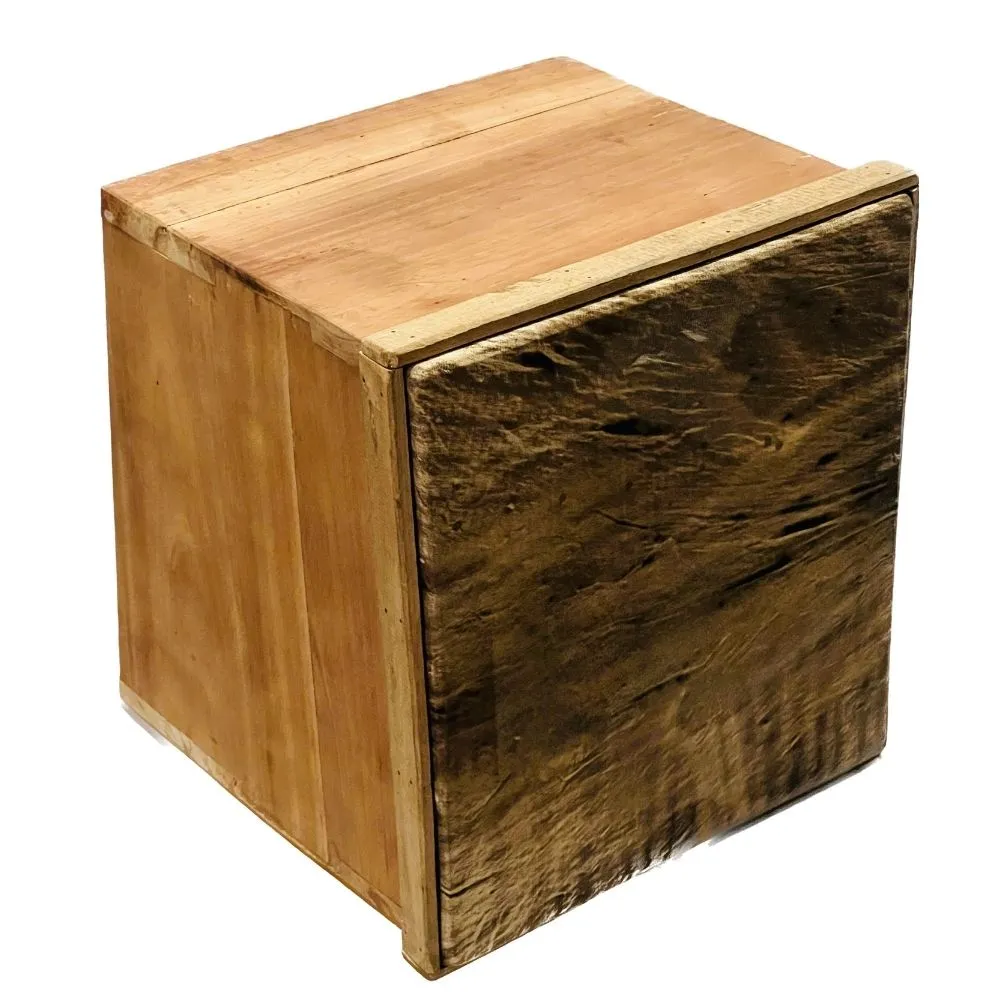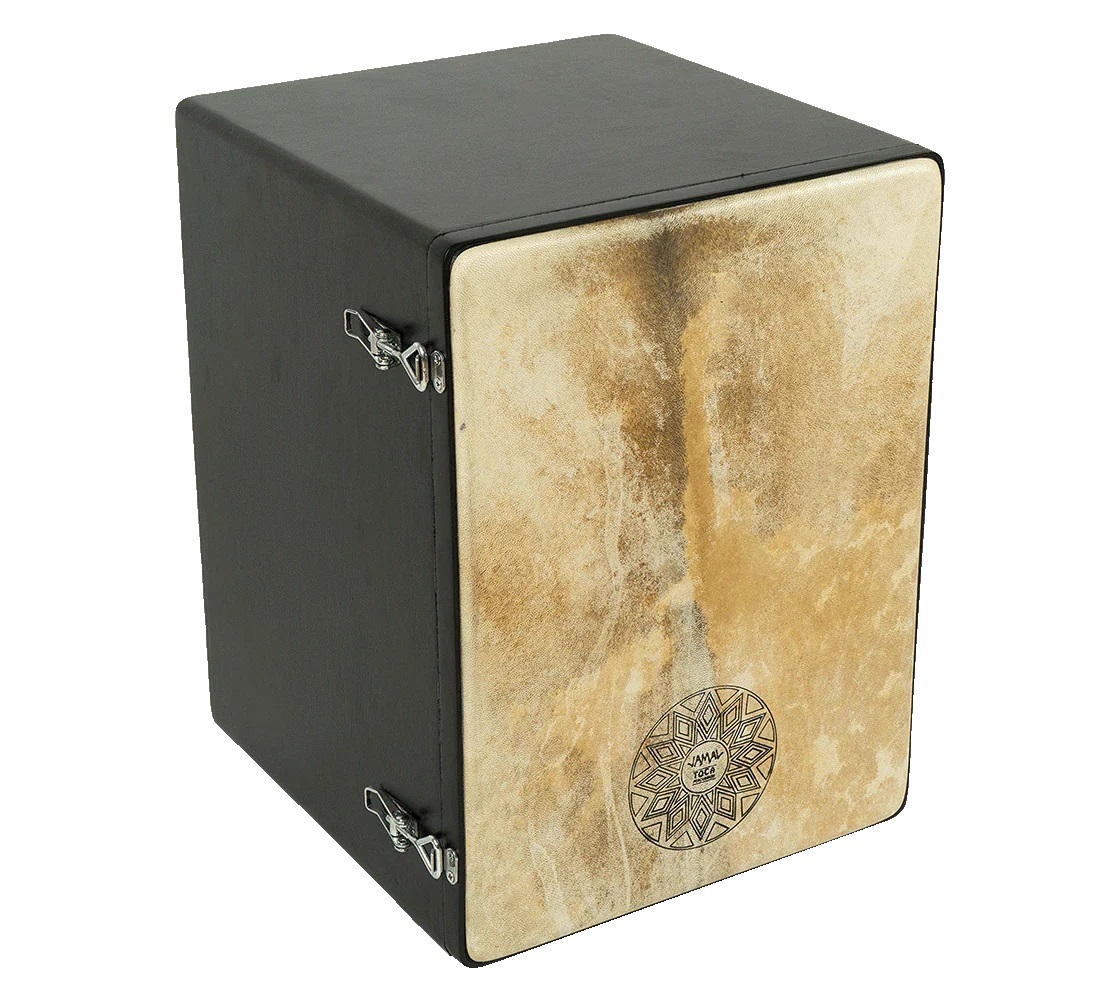Gome
Percussions
Africa
Between 1001 and 1900 AD
Video
The Gome is a large frame drum that originates from West Africa, particularly among the Akan and Ewe people of Ghana. It is known for its deep, resonant tones and is used in various traditional and contemporary musical settings. The instrument is often associated with dance music and ceremonies, where its powerful bass sound plays a crucial rhythmic role. The Gome drum is unique because it is played while seated on it, which contributes to its distinctive tonal production.
Type of Instrument
The Gome is classified as a membranophone, a category of percussion instruments that produce sound through a stretched membrane. More specifically, it is a frame drum, as it consists of a large wooden box with a drumhead stretched over one of its surfaces. This classification places it among other hand-played percussion instruments such as the djembe, talking drum, and conga.
History
The Gome drum has its roots in Africa, particularly in the West African region, where drumming traditions have been deeply embedded in cultural and social life for centuries. Drums like the Gome are essential components of African music, serving both communicative and artistic purposes.
The origins of the Gome can be traced back several centuries, though it became widely recognized in the 18th and 19th centuries. It was developed within the coastal regions of Ghana, influenced by both indigenous African drumming traditions and European wooden box-making techniques. The instrument’s history is closely tied to the cultural exchanges between African and European communities during the colonial era, where wooden structures and frame drums evolved into their current forms.
Construction
The Gome is constructed using a combination of wood, animal skin, and nails. The main body of the drum is a rectangular wooden box, usually made from a lightweight yet durable wood such as cedar or mahogany. A drumhead, typically made from goat or antelope skin, is stretched tightly across one side of the box and secured with nails or wooden pegs. The box is often hollowed out to enhance resonance, allowing the drum to produce deep, bass-heavy sounds when struck. The seated design means that the player must balance their weight on the drum without damaging the stretched skin.
Types of Gome
There are variations of the Gome drum that exist across different regions. The primary differences lie in the size, tuning, and materials used for construction. Some versions are smaller, producing higher-pitched tones, while others are larger, emphasizing the bass resonance. Certain Gome drums are designed with additional reinforcements for professional performance settings, where durability and consistent sound are necessary.
Features of Gome
Large, rectangular wooden frame – Provides the base structure and resonance.
Animal skin drumhead – Produces the deep, rich tones characteristic of the instrument.
Nails or wooden pegs – Used to secure the drumhead tightly.
Seated playing style – The player sits on the drum while striking it, adding a unique method of sound production.
Hand-played – Traditionally played with bare hands, allowing for dynamic control of tones.
Versatile sound range – Can produce bass, mid-range, and higher-pitched tones depending on the striking technique.
Sound Production
The Gome drum produces sound through the vibration of its stretched animal skin membrane, which is attached to a wooden box frame. When struck with the hands, the drumhead vibrates, creating deep, resonant tones. The player can manipulate the pitch by pressing down on the drumhead with one hand while striking it with the other, altering the tension of the membrane. This technique allows for a wide range of tones, from low, bass-like thumps to sharp, high-pitched slaps. The hollow wooden body of the drum acts as a resonator, amplifying the sound and adding depth. The combination of varied hand techniques, controlled pressure, and the natural acoustics of the wooden frame makes the Gome a uniquely expressive percussion instrument capable of producing both rhythmic and melodic patterns.
Playing Methods
The Gome drum is played using a combination of hand techniques and body weight. The drummer often sits directly on the drum while using their hands to strike the drumhead. This seated posture allows for better control over the sound and resonance of the instrument. Common playing techniques include:
Open hand strikes – Used to produce full, resonant tones.
Slaps and taps – Generate higher-pitched and sharper sounds.
Damping with feet – The player presses the drumhead with their feet to alter the tone.
Rhythmic patterns – The Gome is played in complex rhythmic sequences that support dance and ceremonial music.
Roles in Music and Significance
The Gome drum plays a vital role in traditional and contemporary music, particularly in West African and Afro-Caribbean cultures. As a melodic percussion instrument, it serves both rhythmic and tonal functions, making it an essential element in various musical styles. In traditional Ghanaian music, the Gome is used in religious ceremonies, storytelling, and social gatherings, providing deep, resonant beats that drive the music. Its ability to produce different pitches by adjusting hand pressure on the drumhead makes it more versatile than standard drums.
Beyond traditional settings, the Gome has influenced highlife, Afrobeat, and reggae music, where its unique sound blends with other instruments to create rich, polyrhythmic textures. It is often played in ensembles, complementing other drums and melodic instruments. The Gome’s significance extends beyond music; it is a symbol of cultural identity, storytelling, and communal connection, reinforcing traditions while also adapting to modern genres.
Its significance extends beyond music; the Gome is a symbol of cultural heritage and communal identity. It connects past traditions with present musical innovations, ensuring that the rich drumming legacy of West Africa continues to thrive in various musical contexts.
FAQ
What type of instrument is GOME?
GOME is a remote sensing instrument, specifically a double monochromator spectrometer. It is designed for Earth observation and atmospheric composition monitoring, particularly for measuring ozone and other trace gases in the atmosphere.
What are some key features of the GOME instrument?
Key features of GOME include four optical channels with predisperser prisms and holographic gratings, four linear Reticon Si-diode arrays with 1024 spectral elements each, and a spectral range from 240 nm to 790 nm. It also has three broadband polarization monitoring devices and Peltier cooling elements for the detectors.
What materials are used in the construction of GOME?
GOME uses various optical and electronic components in its construction. These include Si-diode arrays for detection, prisms and holographic gratings for light dispersion, and Peltier elements for cooling. The instrument also incorporates a scan mirror at the nadir view port, while the main body likely consists of space-grade materials suitable for satellite instrumentation.
 Links
Links
References
Other Instrument
Categories



















